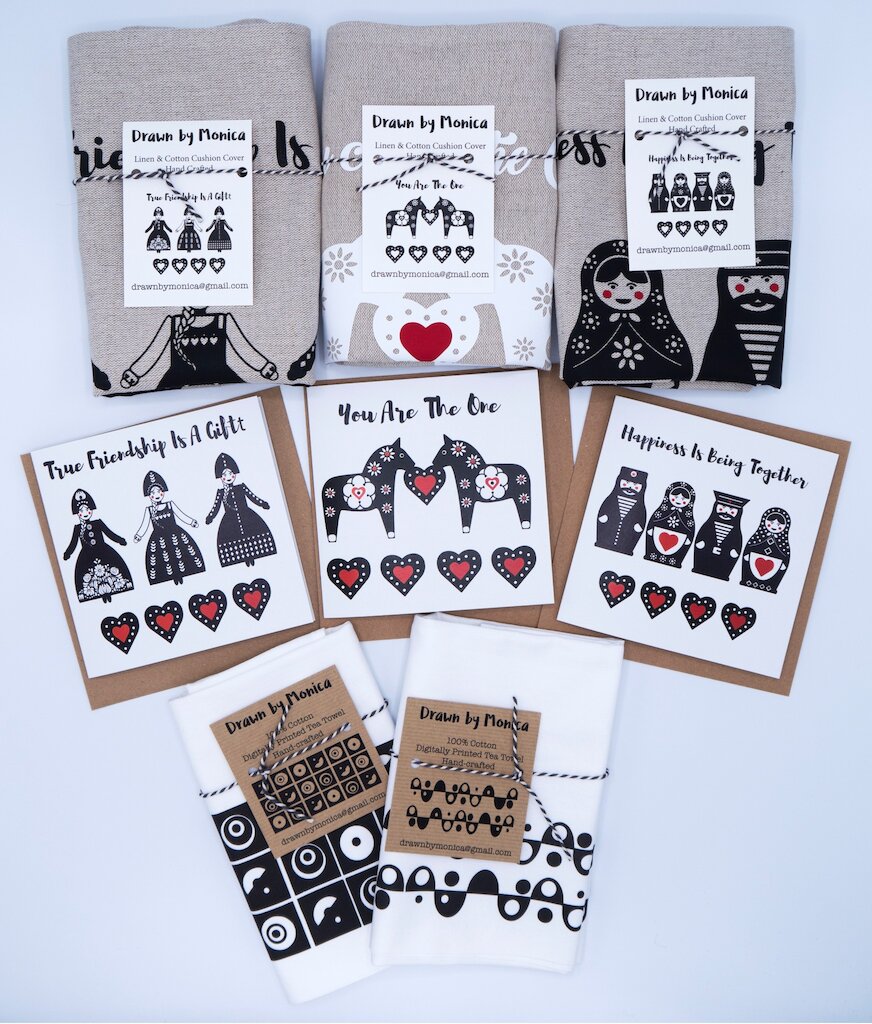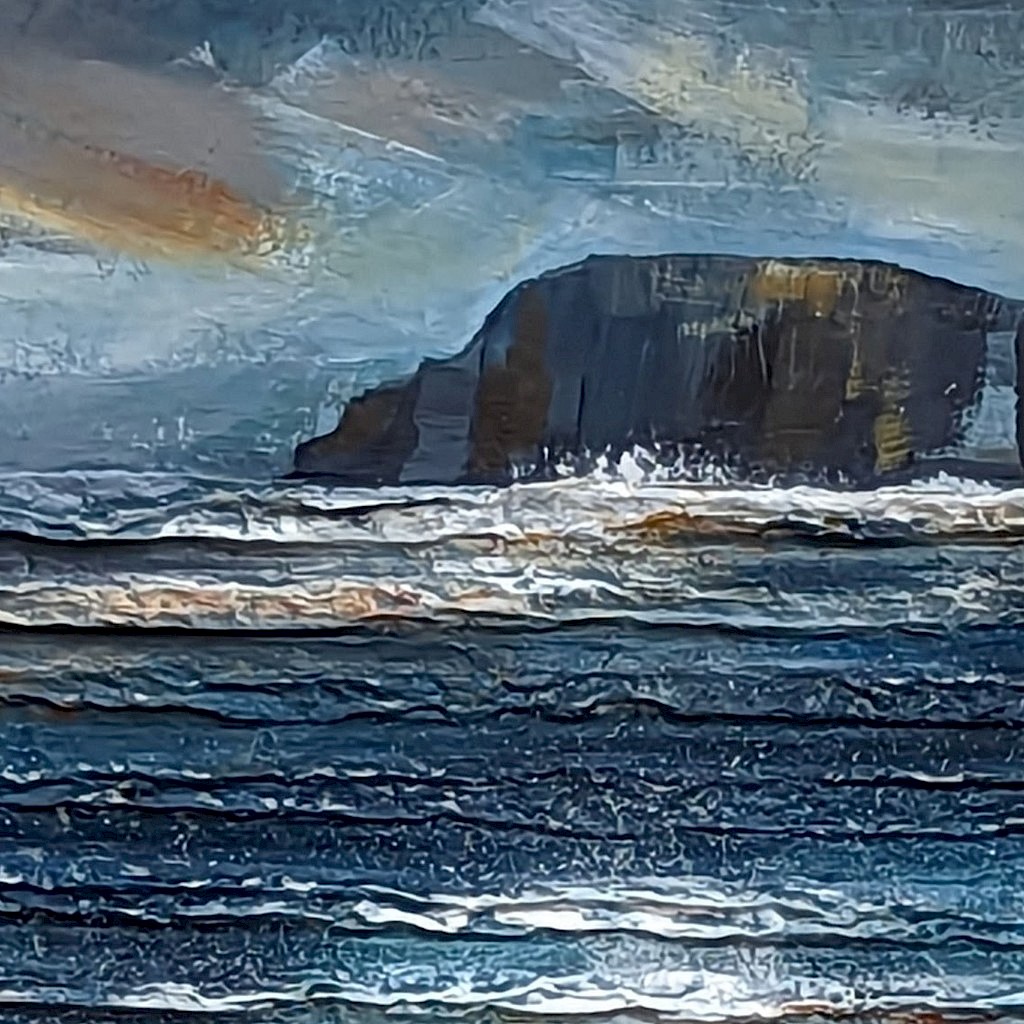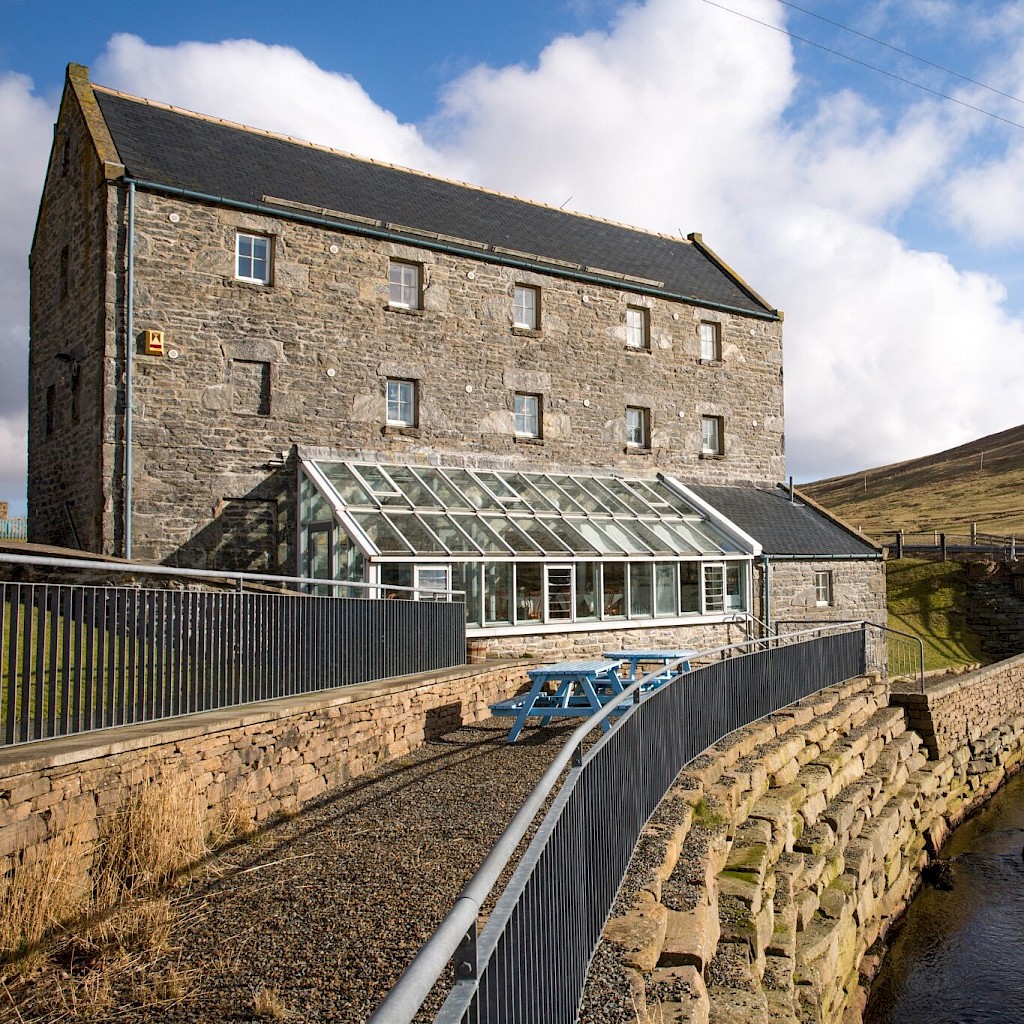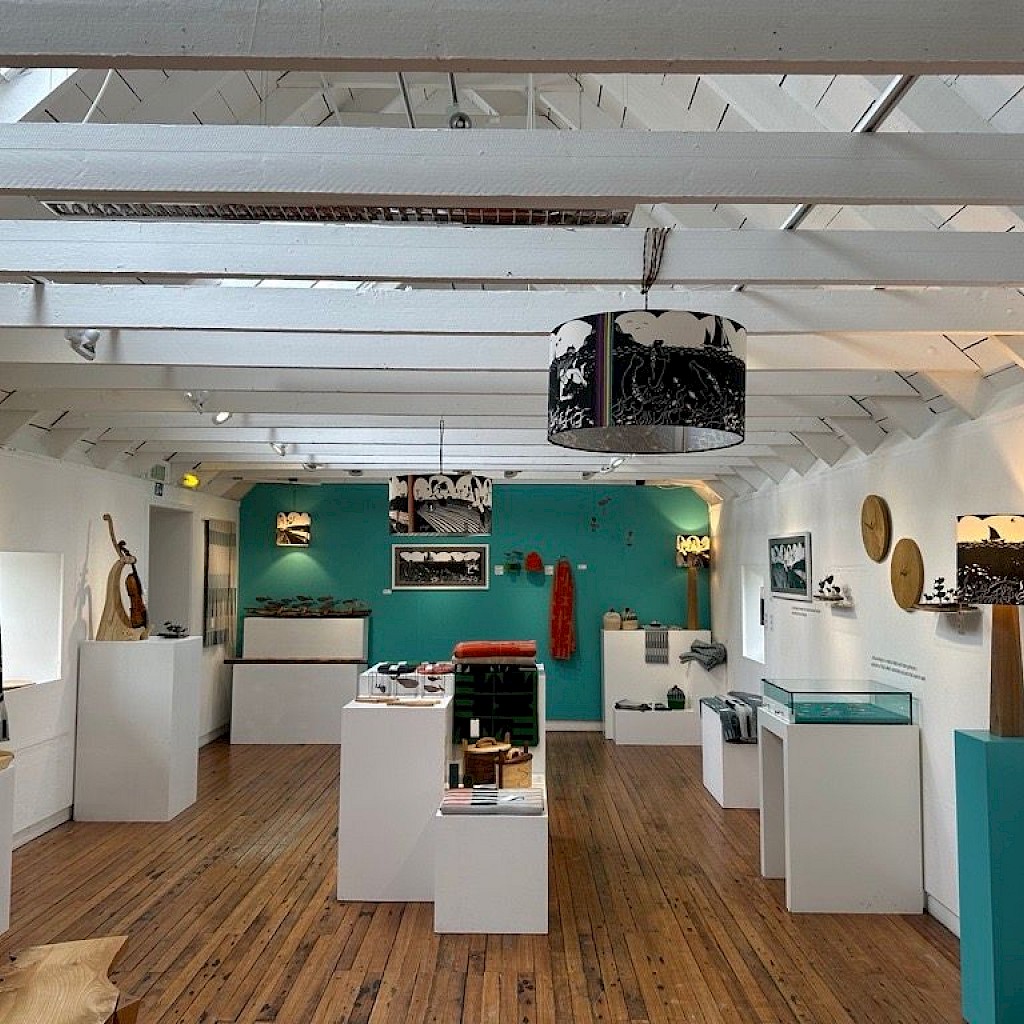Where do you do your work?
I work from home. I don’t have a dedicated studio space, providing a perfect separation from my domestic life.
My family have got used to all the equipment and materials that are essential to create my products filling my abode.
The only issue I have with working from home is that the natural light is very poor; employing artificial light is not great for creating handcrafted goods, and it is a challenge sometimes for me to see the finer details of my processes, i.e. weeding out the small detail from the garment vinyl.
However despite these issues I don’t let them become a barrier to delivering professional results.
What interesting equipment do you use?
For several years I have created my artwork digitally rather than using traditional methods. I use a ‘Wacom interactive drawing board’ connected to my MacBook Pro. Besides generating original artwork, I can also transmit my designs to my Graphtec professional vinyl-cutting machine. The Graphtec allows me to cut out intricate designs for my cushion covers, but also the stencils that I apply to my homemade screen-printing frames.
The reason for this non-traditional drawing approach is that is speeds up my workflow. Eliminating the need to scan in my artwork for the application to textiles, or the printing of paper products.
Creating my artwork digitally has the advantage that I can change elements of my designs and illustrations straightforwardly, such as employing different colour pallets, or enhancing any imperfections using software.
To ensure that I am as independent as possible I have invested heavily in professional equipment over the years. From a professional A3 graphic art laser printer, greetings card creasing machine, to a heavy-duty guillotine. A computerised sewing machine, and overlocker, to DIY equipment to make screen-printing frames. All this equipment is indispensable in facilitating the production of my varied range of handcrafted products.
It is no wonder that one of my sons commented sometime ago that ‘Our home looks more like a factory than a home!’
Who or what do you draw inspiration from?
I draw inspiration from many sources. My main Shetland inspiration stems from my travelling around Shetland on my bike. I own a large photographic portfolio that I take elements from to create my original Shetland illustrations.
I am particularly fascinated by croft life, having spent most of my life living in cities. It is a source that I return to frequently to translate into my illustrations.
For more general inspiration I am drawn to the1950’s, having always loved Lucience Day’s amazing textiles. Her wonderful interpretation of natural plant life, and use of colour is a constant influence on my own stylised expression.
I love using a limited colour palette to express my creativity, and this had become my signature style in both my illustrations and textile motifs.
My current work for this Shetland Made exhibition was initially motivated by my collection of Matryoshka stacking dolls purchased from East Berlin in the early 1980. Having the opportunity to showcase alternative imagery to my popular Shetland portfolios has been an important development in my design practice.
I especially love European folk art, ethnic embroidery, ceramics and other decorative imagery. I have tried to capture a flavour of folk art with my re- imagined motifs in this new collection.
Why do you choose to use the materials that you use? Where do you source your materials?
I believe the key to creating quality-handcrafted products is to be careful in the selection of the raw materials.
I spend quite a long time researching the materials that I finally select, taking into account not only the quality, but also environmental issues. It is central to my craft practice that the materials that I use in my products come form sustainable sources, and are environmentally friendly as possible, whether textiles, paper products, or inks.
For example the screen printing inks that I use for screen-printing are non-toxic water based. The garment vinyls that I have used to create my cushion cover designs are eco friendly polyurethane rather than a PVC vinyl transfer film
My main source of paper and card are from the paper merchants who also supply commercial printers giving me access to a wide range of beautiful premium recycled and sustainable cardstock.
I pride myself on producing all my products myself, however for this collection I have commission a person from the mainland to make my cushion covers to cut down the time that it takes to complete each cover. The beautiful mixed linen and cotton fabric used for making the covers comes direct from Laura Ashley.
How do you work, what is your process? What's your favourite part of the process?
As much as possible I try to produce products that I have completed entirely myself. From generating the initial artwork, applying the imagery to the products. To designing and producing my own branded fabric labels, packaging tags to any other any other additional branding printed information.
I enjoy all the processes in my practice, thought they are labour intensive. I am passionate about creating artwork, much to my family’s frustration I always in front of my drawing board.
I feel compelled to be creative.
I love screen-printing, despite the frustration of not always achieving perfect prints with the method that I employ to produce my textile prints. This involves cutting and weeding out my designs in signage vinyl, applying these stencils to my homemade frames, and pulling the print. Despite careful application with this method, it is not always possible to achieve perfection.
Last year I invested in a manual screen-stretching machine that has made a great difference to the tension that is required to produce a quality print. Lately I have decided to embrace the imperfections as a character of my handcrafted offerings.
Do you have a favourite kind of piece to make?
My favourite pieces are my screen-printed lined zipper pouches. The pouches are made from linen with the folk designs applied through heat transfer paper, completed with attached zipper pom-pom.
I am proud of this 'Folk Art' collection and I hoping that it will be well received by visitors to The Bonhoga Gallery.
How long does it tend to take you to complete a piece?
Too many hours to divulge. Especially when you consider all the preparatory work required. My handcrafted items involve multiple skillsets; hence it is a good job that I love what I do. It is certainly a labour of love, which I am sure all craft makes and artists can relate to.
What does your craft mean to you?
It is my passion, gives me a reason to get up everyday.
What is next for you? Any exciting plans?
Apart from completing my new series of ‘ Shetland Drama’ location illustrations, which I put on the back burner while preparing for the exhibition. I would like to get to grips with social media. I write a Facebook blog, ‘Drawn by Monica’, but realise that to reach a wider audience I need to showcase my work on Instagram. So that is my next focus.
Do you make your craft full time or do you have another job?
I am self-employed, but as income as a craft practitioner tends to be intermittent I am also employed in two part-time jobs. Working early in the morning and late afternoons, allowing me to focus in-between on what I truly love.
What are your most popular pieces?
My Shetland greetings cards, prints, artcards are very much in demand.
Craft aside, what do you like to do in your spare time?
I enjoy cycling, and currently I am following the NHS couch to 5k app to get back into running. I love films, particularly historical dramas, and European films. I also try to devote time to reading, though as this is a bedtime occupation, completing a novel is rather a slow effort.
What motivates you to do what you do?
For many years due to circumstances I was not able to follow my creative dreams. Therefore I am delighted to be able to devote this period of my life to my creative passions. I would suggest that my loved ones would say that I am obsessed!




